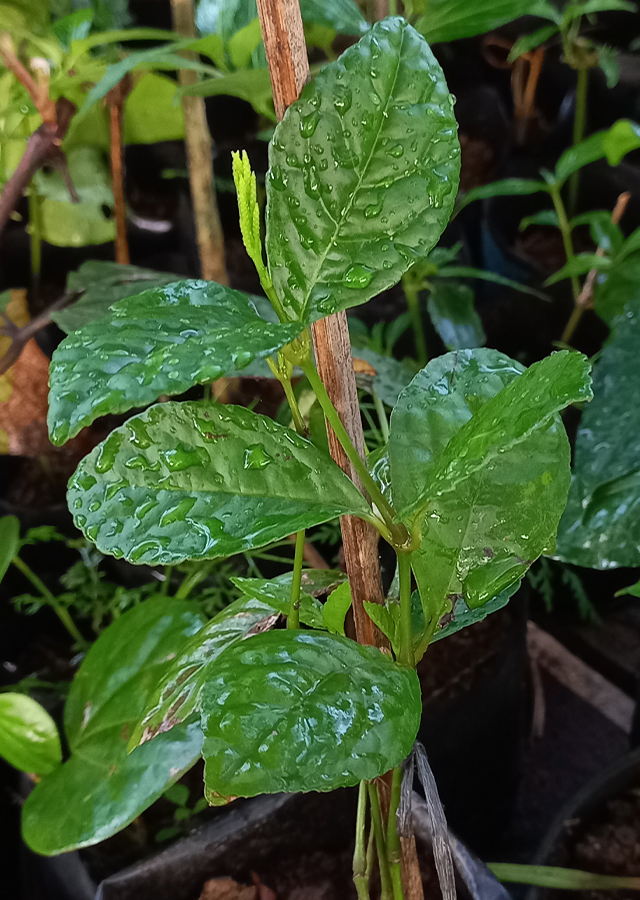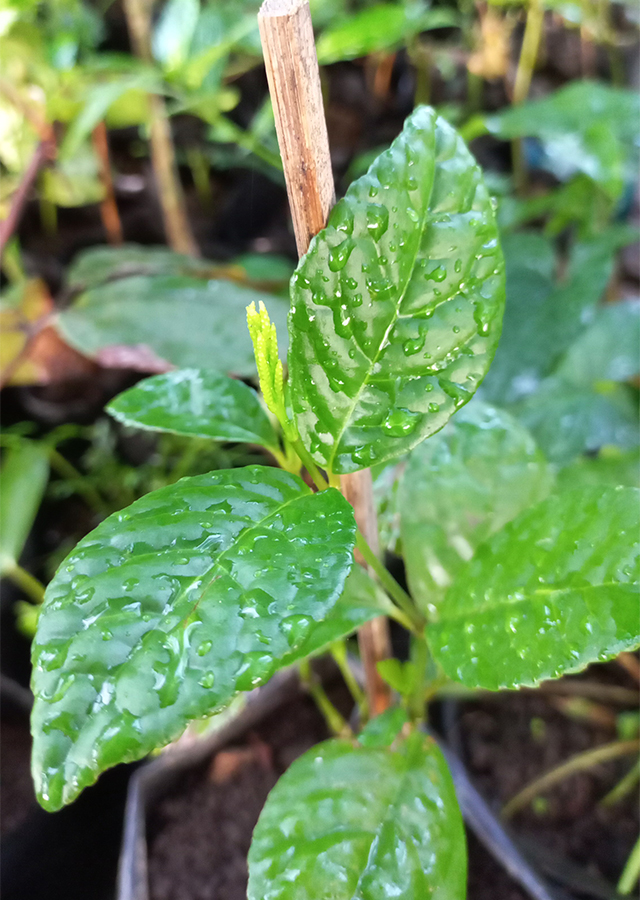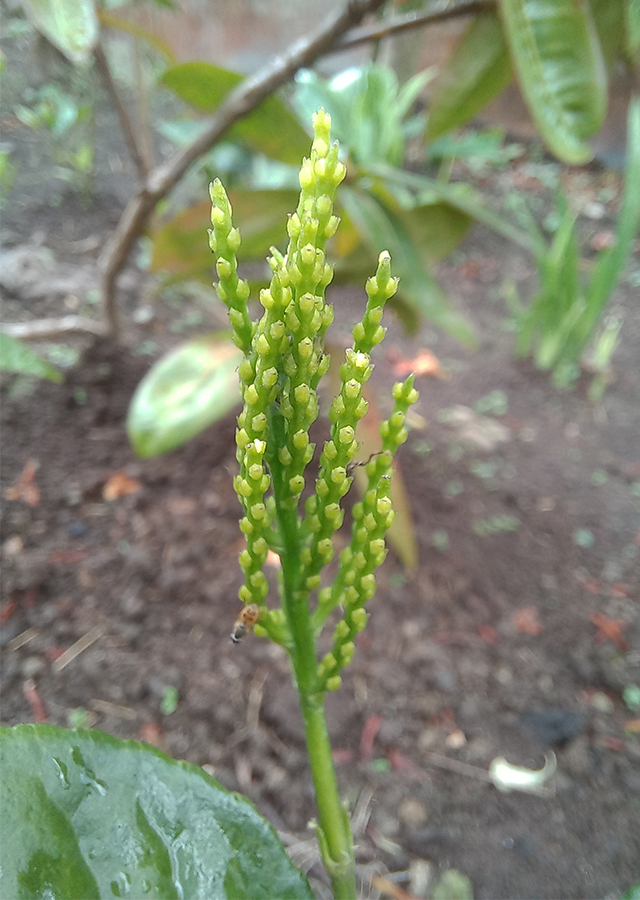Tall Chloranthus
Chloranthus elatior Link
Chloranthaceae
Location in our garden
Principal



Synonym
Chloranthus elatior R.Br.
Chloranthus erectus (Buch.-Ham.) Wall.
Chloranthus inconspicuus Blanco
Habitus
Shrubs. An evergreen, spreading perennial shrub, growing up to 2 m tall.
Part Used
Leaves
Flowers
Roots
Growing Requirements
Need Shade
Drought Resistant
Habitat
Wetland
Forest
Terrestrial
Overview
Native to Nepal to South China and Malesia. It is cultivated in Eastern Himalayan, through Indochina to South-East Asia region as far as New Guinea. It is important as a medicinal plant for many local indigenous cultures, that has been using it in traditional healing for many generations. All parts of the plant are fragrant and aromatic, especially the leaves, stems and roots when crushed. Crushed roots and branches have a camphor-like smell and a slightly peppery and rather bitter taste. In Indonesia and Malaysia, it is cultivated on plantations and traded on markets as a tea. It is also grown as an ornamental. Flowers are used to scent tea in China. Young leaves are eaten raw as vegetable.
Vernacular Names
Lagrimas (Spanish), Yu zi lan (Chinese), Yasinha (India), Thanat-kha (Burmese), Kbak damrei (Cambodian), Sambau paya (Malaysia), Hom kai (Thai), Barau-barau (Luzon-Philippines).
Agroecology
Found in secondary and primary forests up to 2,300 m elevation. At high elevations it often occurs in Araucaria and Fagaceae dominated forests, often on limestone. The lowland habitats include Pandanus and palm forests, riverine forests and boggy areas. It grows in shade of forests in tropical, subtropical and warm temperate climate zones.
Morphology
- Stems - terete, glabrous, 30 to 70 cm high.
- Leaves - opposite, petiole 5-13 mm, leaf blade broadly elliptic or obovate to long obovate or oblanceolate, 10-20 × 4-8 cm, rigidly papery, glandular, glabrous, base cuneate, margin serrate, apex gradually narrowed to caudate; lateral veins 5-9 pairs. Spikes terminal, dichotomously or racemosely branched, rearranged in panicles, long pedunculate; bracts triangular or ovate.
- Flowers - white, small. Stamens 3, connectives confluent and ovoid, not elongate, apical part 3-lobed, central lobe larger, with a 2-loculed anther, lateral lobes smaller, with a 1-loculed anther each, thecae at central or apical parts of connective. Ovary ovoid.
- Fruit - green when young, white at maturity, juicy, obovoid, 5 mm.
Cultivation
- Generative propagation is by seed, and vegetatively by cutting. Optimal germination is obtained by using ripe seeds, dried in the shade, and with the testa removed. Seeds are sown directly in moist and shaded nursery beds and germination follows within a week. Seedlings are ready to be pricked out into individual pots about 2 months later. They are kept in a shaded nursery for another 2-3 weeks and subsequently planted out in the field. Field planting should take place in the wet season to avoid moisture stress.
- Cuttings 10-15 cm long are taken from internodes of branches with a diameter of about 5-8 mm. They should be placed in a shaded container or in a bin, and the soil and air should be kept moist by spraying. The cuttings are inserted in the planting medium to a depth of about 2 cm.
Chemical Constituents
Sesquiterpenoids, disesquiterpenoid, essential oils, chloranthones A-D, chlorelactone A-B, elatiolabdane, chlorantholides A-F, and other compounds.
Traditional Medicinal Uses
- Studies have shown anti-inflammatory, antibacterial, antipyretic properties.
- In India and South-East Asia traditionally used as folklore medicine for localized swelling, joint pains, skin inflammation, fever and body aches.
- Infusion of flowers and leaves used to treat coughs.
- In Java, an infusion of the powdered root and the bark of Cinnamomum culilowan used to treat puerperal eclampsia.
- Paste of leaves with Curcuma longa applied on area of fracture bones to reduce pain and swelling.
- This herb is taken as treatment for coughs due to cold or asthma, it helps to get rid of phlegm.
Part Used
Reference Sources
- Arseniuk, Adam. (2020). Chloranthus erectus - Yasinha, Yu Zi Lan, Harostulang, Barau Barau, Kraduk Kai. https://herbsfromdistantlands.blogspot.com/2020/07/chloranthus-erectus-yasinha-yu-zi-lan.html?m=1. 04-01-2022.
- Asian Plants. (No date). Chloranthus elatior Link Enum. Hort. Berol. Alt. https://asianplant.net/Chloranthaceae/Chloranthus_elatior.htm. 04-01-2022.
- Fern, Ken. (2021). Useful Tropical Plants: Chloranthus erectus. http://tropical.theferns.info/viewtropical.php?id=Chloranthus+erectus. 04-01-2022.
- Kew Royal Botanic Gardens. (2017). Plants of the World Online: Chloranthus elatior Link. http://www.plantsoftheworldonline.org/taxon/urn:lsid:ipni.org:names:77112331-1. 04-01-2022.
- Stuartxchange. (2020). Philippine Medicinal Plants: Barau-barau. http://www.stuartxchange.org/Barau-barau. 04-01-2022.


